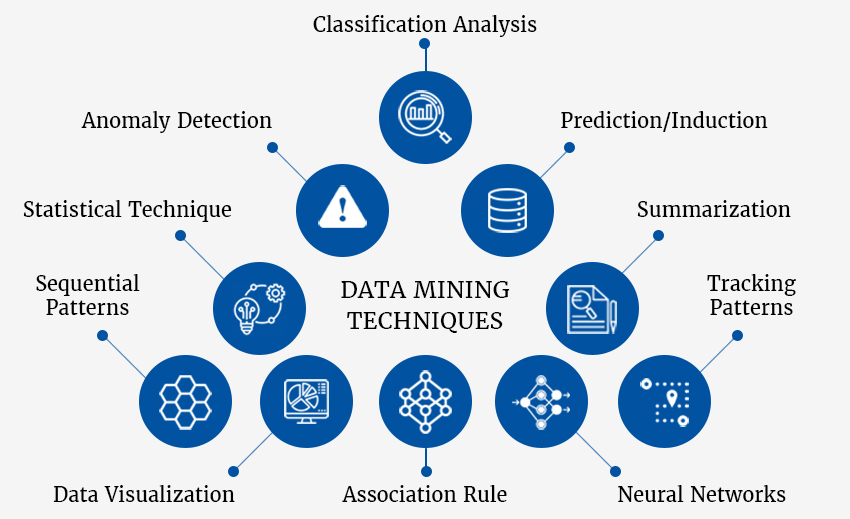
Dealing with huge volumes of data is a challenge itself. Analyzing and deriving information from such large files to base statistical predictions is all the more daunting. In a survey conducted on data mining practices and requirements, “92% of respondents wanted to deploy advanced analytics more broadly across their organizations.”
The data mining process helps to seamlessly derive valuable insights out of voluminous data files. The process comprises various techniques, the application of which typically depends on the type of data and industry. However, there are three basic steps that data mining involves, which are:
- Exploration: The first step is to go through the data in depth. Segregate the data that is important from the irrelevant ones. Eliminate duplicates or useless data entries. If you feel the task is too tedious, you can always outsource data cleansing services to get clean and relevant data that you can directly use.
- Modeling: Now, structure some statistical models with the goal of evaluating the data. This will help you analyze better and have accurate predictions.
- Deployment: After you have prepared your model, it is time to test it, against both old data and new data. You have everything in front of you to generate predictions, base business decisions or derive estimates of the expected outcome.
The Top 10 Data Mining Techniques To Streamline Your Business

1. Classification/Clustering Analysis
As the name suggests, you can use this data mining technique to group the different data sets in different categories. Classification and clustering are two different techniques but work in the same way. Clustering also involves segregating data records into different segments called classes. However, in the case of classification, the structure or identity of the data is known. For instance, in case of an email, based on the known patterns you label them as authentic or spam. In clustering, the structure of the data is unknown.
2. Anomaly or Outlier Detection
The technique is best for data that carries multiple errors and anomalies. The data is critically examined with human intervention. And, further evaluated to ensure that the data is free from irrelevancies.
3. Prediction/Induction Rule
Using prediction, you predict behaviors and trends using past data. For example, analyzing a customer’s credit history can let you project the probability of him/her taking a loan. Induction involves analyzing the local patterns in the data. After which you can deduce the ‘if-then’ rules from a data set. For instance, if a given action xyz occurs, then we can expect abc result.
4. Statistical Technique
Usually, data mining focuses on projections that are primarily based on historical data. The statistical technique involves statistics that are focused on probabilistic models, like Statistical inference. Using the probability theory, it is easier to model the uncertainty or detect the patterns in data.
5. Summarization
Your data is duly processed, summarized and represented in a compact manner. Presenting data sets in a compressed mode allows you to have better clarity and a clear overview of the results.
6. Sequential Patterns
Analyzing the sequential patterns is helpful in discovering a sequential series of events. This is one of the most favored and easy data mining techniques because generally data is recorded sequentially. For instance, when you record sales patterns over the course of a day, it is recorded in sequence by default.
7. Tracking Patterns
It involves analyzing and identifying patterns in your data sets. You can recognize patterns like regular increases and decreases in traffic or sales within a particular duration.
8. Data Visualization
The aim of this technique is to provide processed information in simple and easy-to-understand visual elements, such as charts, graphs, digital images, and animation. This is one of the most effective data mining tools which provide a seamlessly accessible way to perceive and understand trends, outliers, and patterns in data through a graphical representation.
9. Neural Networks
Using an artificial neural network, this technique helps you to extract insights by identifying existing patterns in a database and infer rules. It is most useful in gathering data on associations, classifications, clusters, and forecasting.
10. Association Rule Learning
The technique is applied to analyze large quantities of data and identify relations or interdependencies among different variables. It can help you to identify even the hidden patterns that might not otherwise be clear or obvious.
No matter which of these techniques you use in the data mining process, it will only help you in maximizing the value of your data. Have a clear idea of what you want out of the data as per your industry. Then, include one or more of these techniques to get the best of your data.
However, if you feel you went through a lot of trouble to get that data or you are unable to spare time for applying these data mining techniques, then drop a mail to info@dataentryindia.in and know how you can simply outsource data mining services to experts.